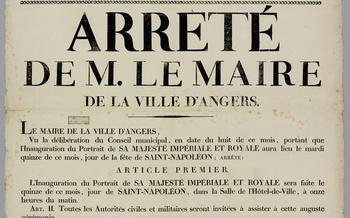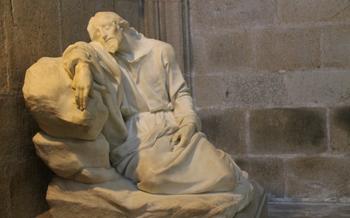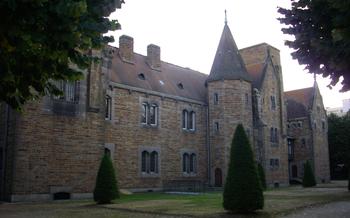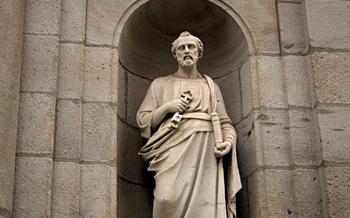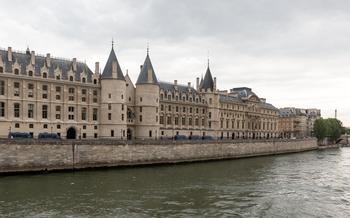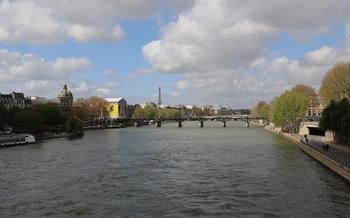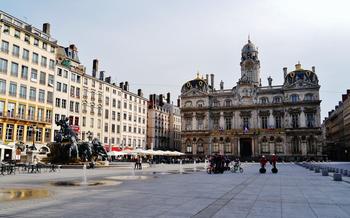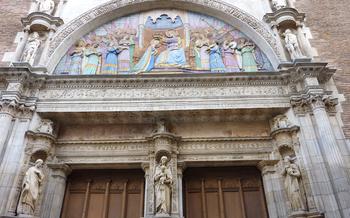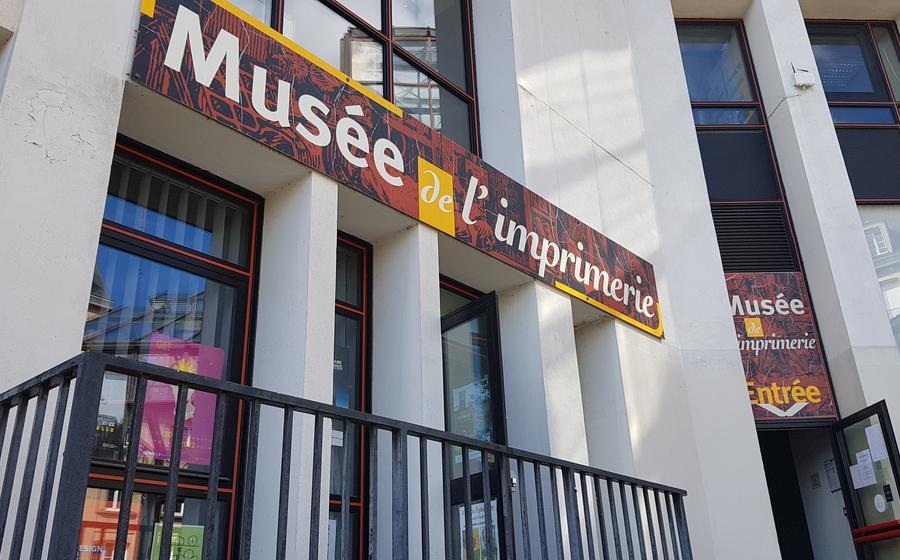
Musée de l'Imprimerie
- Interactive Exhibits for Hands-On Learning
- The Gutenberg Galaxy: A Showcase of Printing Milestones
- Impact of the Gutenberg Bible on the Spread of Knowledge
- The Museum's Architectural Charm
- A Bookstore for Bibliophiles
- The Courtyard: A Place for Reflection and Inspiration
- Accessibility and Facilities
- Planning Your Visit: Tips for a Rewarding Experience
- Insider Tip: A Hidden Gem for Printing Enthusiasts
Interactive Exhibits for Hands-On Learning
The Musée de l'Imprimerie offers an array of interactive exhibits that provide visitors with hands-on experiences and deeper insights into the world of printing. These interactive elements make learning about printing history and techniques engaging and enjoyable for visitors of all ages.
One of the highlights is the hands-on printing experience, where visitors can try their hand at traditional printing techniques using replica presses and tools. This hands-on experience allows visitors to understand the intricacies of the printing process and appreciate the craftsmanship involved.
Virtual reality demonstrations offer a unique way to explore the history of printing. Visitors can immerse themselves in virtual environments that recreate historical printing workshops or trace the journey of a book from manuscript to printed form. These immersive experiences bring the past to life and make learning about printing history interactive and memorable.
Interactive displays and multimedia presentations provide engaging and informative content about the evolution of printing techniques and the impact of the printing press. Visitors can explore interactive timelines, view historical documents, and learn about the lives and contributions of notable figures in the history of printing.
The museum also offers workshops for children and adults, providing opportunities for hands-on learning and creative expression. These workshops cover various topics, such as bookbinding, typography, and papermaking, allowing participants to gain practical skills and explore their creativity in a fun and educational environment.
The Gutenberg Galaxy: A Showcase of Printing Milestones
At the heart of the Musée de l'Imprimerie lies a testament to the revolutionary impact of Johannes Gutenberg's invention—the Gutenberg Bible. This 15th-century masterpiece, meticulously crafted using movable type, stands as a symbol of the transformative power of the printing press. Through its exquisite craftsmanship and widespread distribution, the Gutenberg Bible played a pivotal role in disseminating knowledge, fueling the Renaissance, and shaping the course of human history.
The museum pays homage to Gutenberg's genius, showcasing the first printed edition of the Bible as a cornerstone of its collection. Visitors can marvel at the intricate details, sharp typography, and historical significance of this remarkable artifact. Beyond the Gutenberg Bible, the museum delves into the contributions of other pioneers in the field, tracing the evolution of printing techniques and their impact on society.
Impact of the Gutenberg Bible on the Spread of Knowledge
The invention of the printing press, spearheaded by Gutenberg's groundbreaking work, ushered in an era of unprecedented access to information. Prior to this technological marvel, books were laborious to produce, limited in quantity, and accessible only to a privileged few. The Gutenberg Bible, with its mass production capabilities, shattered these barriers, making knowledge more widely available and empowering ordinary individuals to engage with written works.
This democratization of knowledge had a profound impact on education, literacy rates, and the dissemination of ideas. It fueled the intellectual and cultural awakening of the Renaissance, fostering new perspectives, scientific discoveries, and a thirst for exploration. The Gutenberg Bible's legacy extends far beyond its religious significance; it catalyzed a revolution in communication and laid the foundation for modern publishing and the free flow of information.
The Museum's Architectural Charm
In addition to its remarkable collection, the Musée de l'Imprimerie is housed in a building that is a masterpiece of architectural significance. The museum occupies a former convent, the Couvent des Jacobins, dating back to the 17th century. The building has undergone meticulous restoration and renovation to preserve its historical charm while accommodating modern museum facilities.
The architectural features of the museum are a testament to its rich past. Its grand façade, adorned with intricate carvings and sculptures, hints at the building's religious origins. Inside, visitors can admire the original stonework, vaulted ceilings, and stained-glass windows that have been lovingly restored to their former glory.
The transformation of this historic convent into a museum dedicated to printing is a testament to Nantes' commitment to preserving its cultural heritage. The museum's architects skillfully blended the building's original features with modern design elements, creating a harmonious space that respects the building's history while providing a functional and engaging environment for visitors.
The result is a museum that is both visually stunning and deeply evocative of the past. The Musée de l'Imprimerie not only showcases the evolution of printing but also serves as a reminder of Nantes' rich architectural and cultural heritage.
A Bookstore for Bibliophiles
In the heart of the Musée de l'Imprimerie, bibliophiles will find a treasure trove of printed wonders. The museum's bookstore is a haven for those passionate about the written word, offering an extensive collection of books on printing, typography, and graphic arts. From rare and out-of-print editions to contemporary works by renowned authors and designers, the bookstore caters to every taste and interest. Whether you're a collector seeking that elusive first edition or simply a lover of beautiful books, this bookstore is a must-visit.
Housed within the museum's historic building, the bookstore exudes an aura of charm and authenticity. Its shelves are lined with an eclectic mix of titles, from classic works on typography to modern explorations of digital printing. Visitors can browse through a vast selection of books on the history of printing, the evolution of typefaces, and the impact of printing on society. There are also books on graphic design, illustration, and calligraphy, as well as a range of children's books on printing and typography.
In addition to books, the bookstore offers a range of gifts and souvenirs inspired by the museum's collection. These include prints, posters, postcards, and other items featuring historic typefaces, printing presses, and other printing-related motifs. Visitors can also find a selection of unique gifts for book lovers, such as book-shaped jewelry, literary-themed puzzles, and even edible books made from chocolate or candy.
The Courtyard: A Place for Reflection and Inspiration
Amidst the hustle and bustle of the museum, the courtyard offers a tranquil oasis for visitors to pause and reflect. Sculptures, benches, and water features create a serene ambiance, inviting visitors to immerse themselves in the beauty of their surroundings. The courtyard serves as a place for contemplation, where one can appreciate the significance of the museum's collection and the enduring legacy of printing.
Events and workshops are occasionally held in this serene space, providing an opportunity for visitors to engage with the museum's exhibits on a deeper level. Whether you're seeking a moment of tranquility or a space for creative inspiration, the courtyard of the Musée de l'Imprimerie is a hidden gem that should not be missed.
Accessibility and Facilities
The Musée de l'Imprimerie is committed to providing an inclusive and accessible experience for all visitors. The museum is wheelchair accessible, with ramps and elevators ensuring easy navigation throughout the building. Audio guides are available in multiple languages, allowing visitors to explore the exhibits at their own pace and in their preferred language. Cloakroom and locker facilities are provided for visitors to store their belongings securely. To ensure a comfortable and enjoyable visit, the museum also features a cafeteria offering refreshments and light meals, providing a convenient option for visitors to refuel and recharge during their visit.
Planning Your Visit: Tips for a Rewarding Experience
To ensure a fulfilling visit to the Musée de l'Imprimerie, advance planning is key. Online booking for guided tours and workshops is highly recommended, especially during peak tourist seasons. Guided tours are available in multiple languages, offering in-depth insights into the museum's exhibits and the history of printing.
Allocate ample time to explore the museum's extensive collection. The exhibits are well-organized and presented, allowing visitors to delve into the evolution of printing techniques and appreciate the diverse artifacts on display. Combine your visit to the museum with other attractions in Nantes for a well-rounded cultural experience. The city offers a wealth of historical sites, art galleries, and museums, making it an ideal destination for travelers interested in history, art, and culture.
Before your visit, check the museum's official website for information on special events, exhibitions, and programs. These events provide an opportunity to engage with experts, participate in hands-on activities, and gain a deeper understanding of the world of printing. With careful planning, your visit to the Musée de l'Imprimerie will be an enriching and memorable experience.
Insider Tip: A Hidden Gem for Printing Enthusiasts
For an even more immersive experience at the Musée de l'Imprimerie, here are some insider tips:
-
Delve into the museum's library, a treasure trove of rare books and manuscripts related to printing. With works dating back centuries, the library offers a glimpse into the rich history of the written word.
-
Participate in a hands-on printing workshop and learn a traditional printing technique firsthand. From typesetting to inking and pressing, you'll get a practical understanding of the processes that have shaped the world of printing.
-
Join a guided tour led by knowledgeable experts who will provide insights into the museum's collection, the history of printing, and the impact of this revolutionary technology on society.
-
Keep an eye out for special events and exhibitions that delve deeper into specific aspects of printing, showcasing the latest innovations and contemporary perspectives on this fascinating field.
